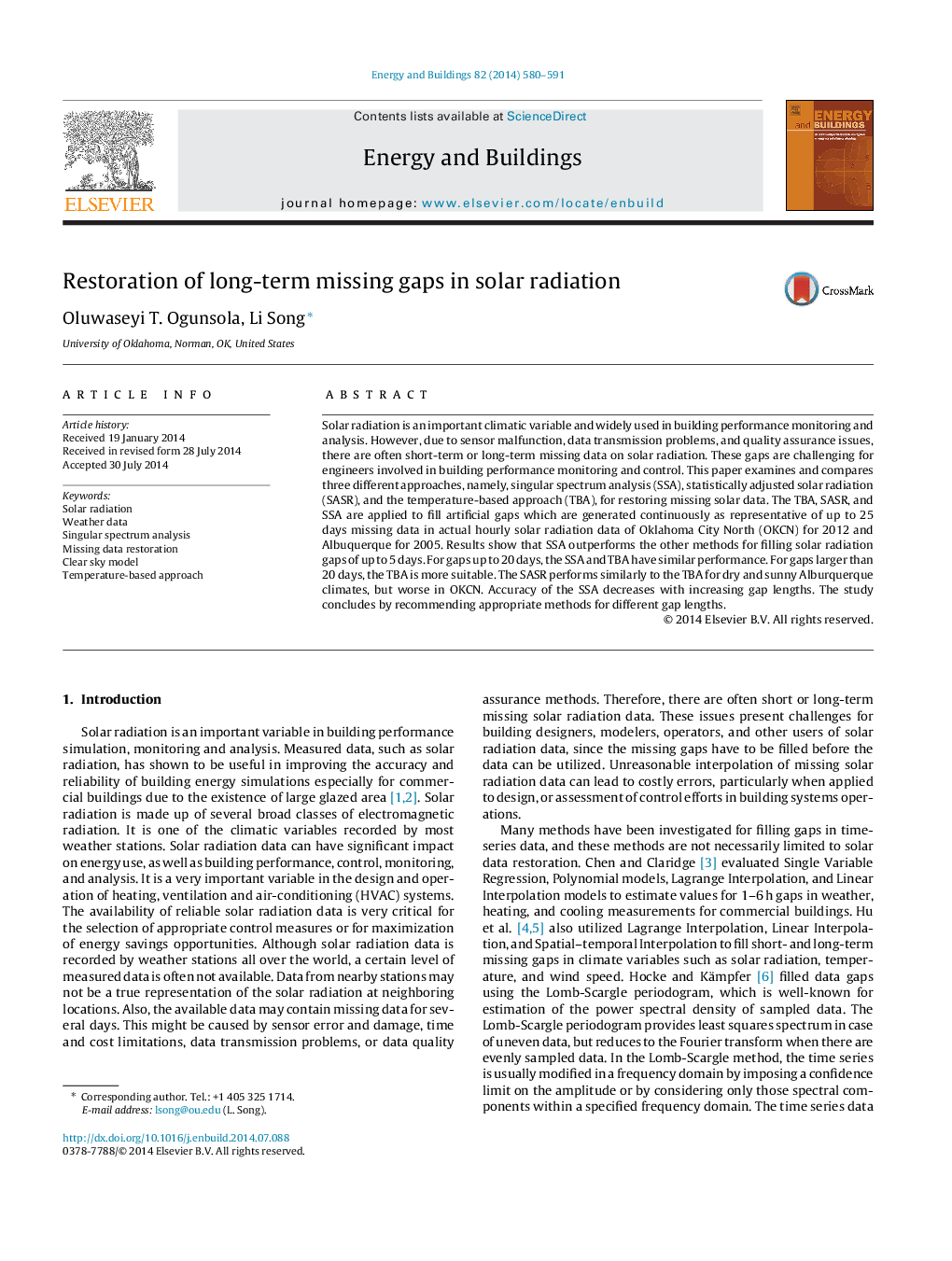| کد مقاله | کد نشریه | سال انتشار | مقاله انگلیسی | نسخه تمام متن |
|---|---|---|---|---|
| 262697 | 504047 | 2014 | 12 صفحه PDF | دانلود رایگان |
• We tested the SSA, TBA, SASR methods to restore data gaps in solar radiation.
• We created pseudo gaps using actual data of Oklahoma City North and Albuquerque.
• The results show SSA outperforms TBA and SASR for filling gaps of up to 10 days.
• TBA is similar to SSA for up to 20-days gaps and better for more than 20-days gaps.
• Across different months, accuracy tended to decrease with increasing gap length.
Solar radiation is an important climatic variable and widely used in building performance monitoring and analysis. However, due to sensor malfunction, data transmission problems, and quality assurance issues, there are often short-term or long-term missing data on solar radiation. These gaps are challenging for engineers involved in building performance monitoring and control. This paper examines and compares three different approaches, namely, singular spectrum analysis (SSA), statistically adjusted solar radiation (SASR), and the temperature-based approach (TBA), for restoring missing solar data. The TBA, SASR, and SSA are applied to fill artificial gaps which are generated continuously as representative of up to 25 days missing data in actual hourly solar radiation data of Oklahoma City North (OKCN) for 2012 and Albuquerque for 2005. Results show that SSA outperforms the other methods for filling solar radiation gaps of up to 5 days. For gaps up to 20 days, the SSA and TBA have similar performance. For gaps larger than 20 days, the TBA is more suitable. The SASR performs similarly to the TBA for dry and sunny Alburquerque climates, but worse in OKCN. Accuracy of the SSA decreases with increasing gap lengths. The study concludes by recommending appropriate methods for different gap lengths.
Journal: Energy and Buildings - Volume 82, October 2014, Pages 580–591
